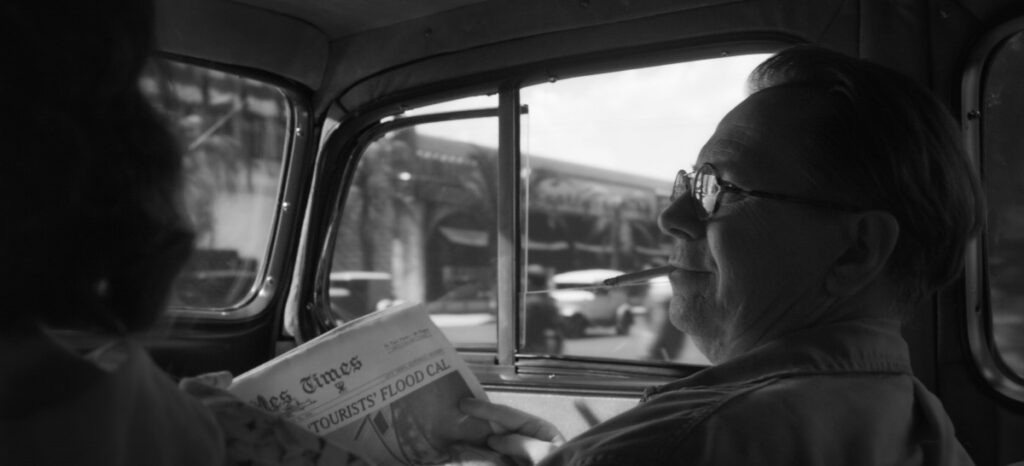
There are many reasons why there’s a general wave of excitement whenever there’s a new David Fincher movie. That’s particularly been the case with Mank considering the six-year gap since Fincher’s last film Gone Girl, roughly half that time in which Fincher was making the series Mindhunter for Netflix.
Most of Fincher’s fans within and outside the industry see the filmmaker as a modern master of the visual medium, and Mank offers further proof of this with stunning shots recreating Hollywood in the ‘30s and ‘40s, fully realized background environments in which well-known icons from the era discuss the political climate of the times, both in the country and in Tinsel Town itself. At the center of it all is Gary Oldman’s Herman Mankiewicz, the illustrious screenwriter who would win a shared Oscar for co-writing Orson Welles’ Citizen Kane.
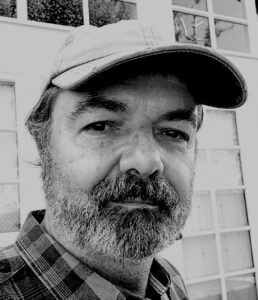
One person who has been along for the ride watching Fincher’s rise as a visionary filmmaker is Peter Mavromates, whose first film with Fincher was 1997’s The Game, but who first met the director on a Michael Jackson video and a commercial he directed. Mavromates has worked in post for over 35 years, as one of the first to champion the benefits of combining analog film with digital post, producing his first DI (Digital Intermediary) for Fincher’s 2002 movie, Panic Room, which was shot on analog. Five years later, he did the same for Zodiac, Fincher’s first digitally-shot film.
As Fincher’s Post-Production Supervisor, Mavromates’ duties continued to expand and evolve, his duties involving all the budgeting and hiring when it comes to the post process. “I like to describe it as once the image is captured, it becomes my problem,” he told Below the Line over a Zoom call a few weeks back.
As might be expected, David Fincher does things quite differently from other filmmakers, taking on the title of VFX Supervisor himself for Mank with Mavromates acting as VFX Producer (and Co-Producer) on the overall film.
Mavromates first heard about Fincher’s passion project while they were doing post on Fight Club in 1999, while Fincher’s father Jack Fincher, who wrote the Mank screenplay, was still alive. “We were hoping to make it then,” he says. “Obviously, it would have been shot on black and white film, but there was an aversion to black and white film back then, and it was a bit of an art movie, so it was a lot of risk, and it never happened.”
Before even getting into the visual effects for any particular scene, we need to address the decision to shoot the film in black and white. As we learned from Cinematographer Erik Messerschmidt, it was something that had to be worked out fairly early on. “We did a lot of testing and prep,” Mavromates confirmed. “We tested three cameras — there were two monochrome cameras, and one color — but we really wanted to dial in the look early on, so the testing was very important. We have our DI in-house when we work, so when we’re testing, Erik literally could go out in the parking lot to test it, bring it in and look at it right away. We’re pretty committed to the imagery.”
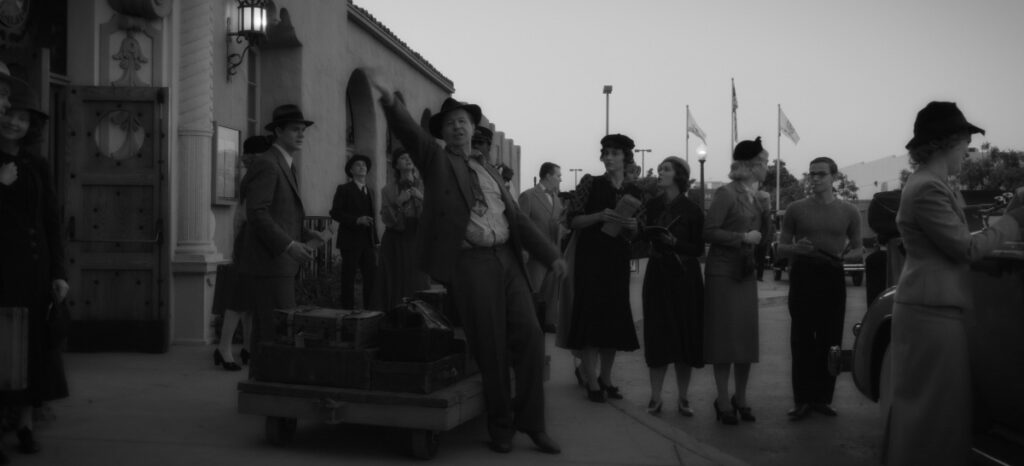
“There was a lot of work to come up with the look of a black and white print from the ’30s. There’s something we call blooming blacks – one thing [we] had a lot of conversations about grain structure and the degradation that happens in film opticals,” he explained about what those tests entailed towards the final look of the film. “This whole look of the black and white in the ‘30s also spilled into VFX because Savage [VFX], one of the companies we deal with, took over putting lens flares on, based on 1930s lens flares.” This is compared to the ‘80s film characteristics used for Mindhunter.“Then it was a matter of pairing that testing and what we learned as the dailies went on into post to make sure we were as consistent as possible when we did visual effects and compositing,” he continued, saying Fincher would know when it was actually right. “Because he’s a photographic genius,” Mavromates said with a smile.
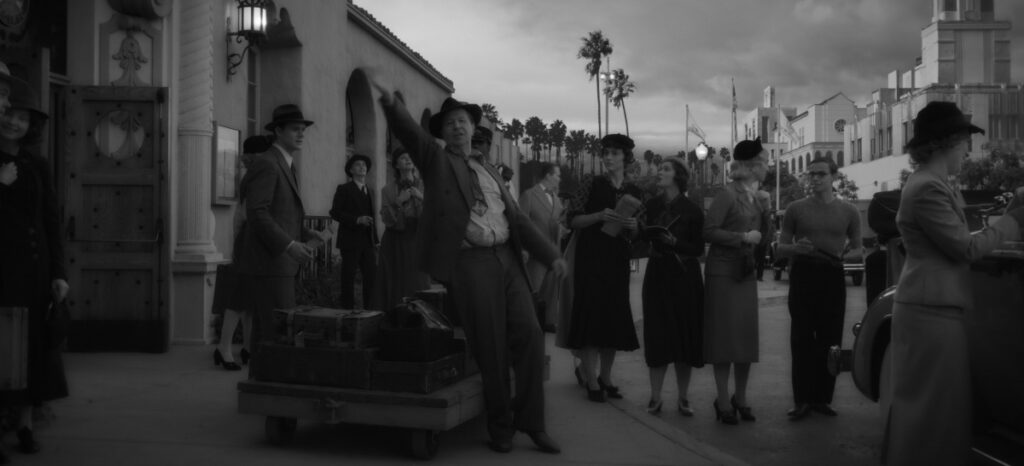
Getting into more of the specific visual FX, Mank was particularly demanding in every respect. “As you see, most of the movie, [Mank] is inside on a bed. But aside from that, our favorite matte painter named Wei Zhang, at a company called Artemple, he did most of the major matte paintings that were there to bring Hollywood back into the ’30s, and then there were some special needs. ILM did animals for the Xanadu Zoo.”
Surprisingly, Mank would be the first time Fincher and Mavromates worked with the perennial Industrial Light and Magic aka ILM, supervised by Pablo Hellman, called in for its specific skill set. “There are three different scenes that have animals,” we were told. “They’re all part of a walk that Mank and Marion take, because she walks out embarrassed from the party. There’s one where they walk by a monkey cage – [ILM] created the monkey cage and populated it with monkeys. Then they walk along, and they see two giraffes that are behind this cage. They walk further and then they see this field that has I think five elephants and a zebra in it.”
Getting back to the work of Artemple, it replicated much of the old school skill of matte painting, in which realistic backdrops would be painted for outdoor scenes, although in this case it was done in post, including one scene at the Glendale train station, as well as the film’s amazing final shot of the Trocadero sign that was all done digitally.
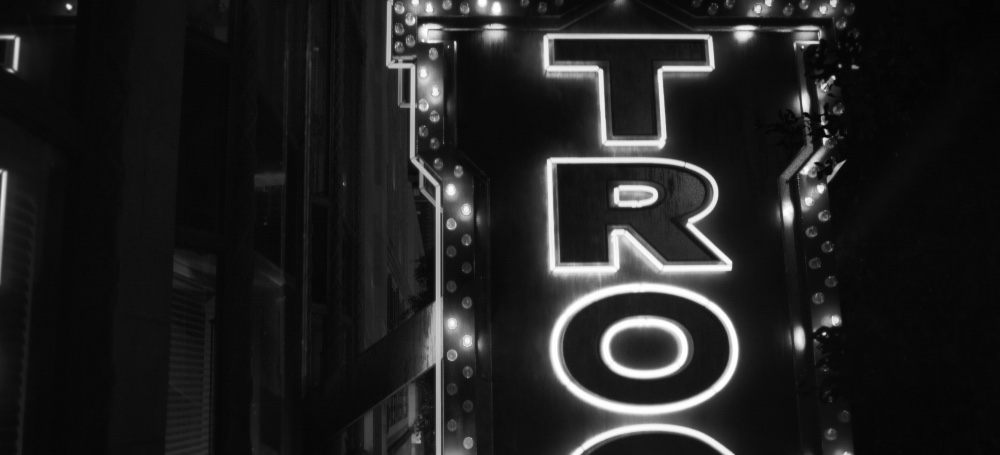
Being that Mavromates’ collaboration with Fincher began as the world of digital coloring and DI evolved, having an in-house DI suite makes perfect sense. “He does a lot of ‘noodling,’ if I can steal a word from the film,” he told us. “David is the one filmmaker I work with that I feel that he paints in post. He wants to fix this, he wants to correct that, he wants to enhance lighting here in this corner.”
Times are changing, though, as is the need for doing all VFX in post, as some scenes required Fincher and his team to experiment with what’s now called, “virtual production*.” “In [one] particular case, there were a couple of FX shots that came up that we needed for playback on an LED screen, which was work that Artemple did. We don’t necessarily know all the effects shots through prep. A lot of them come up based on shooting locations that maybe we don’t know then. We’re constantly assigning stuff as it comes up.” The fourth VFX house involved with Mank was Territory Studio, supervised by Simon Carr, whose work included some of the VFX for the driving sequences, and Ollin VFX in Mexico also contributed VFX to the film.
Having the ability to film with realistic VFX on set with the actors doesn’t preclude doing some post “noodling.” “The picnic scene when Marian and Mank are sitting on the log, talking about her having read the script, we added some lens flaring into that shot to tie it up, but that’s not on location,” Mavromates explained. “The plate behind them was found on location and then put onto a panel and then they brought that log into this stage and they had their scene.” Mavromates only goes on set when needed, such as when those LED panels and projection is used.
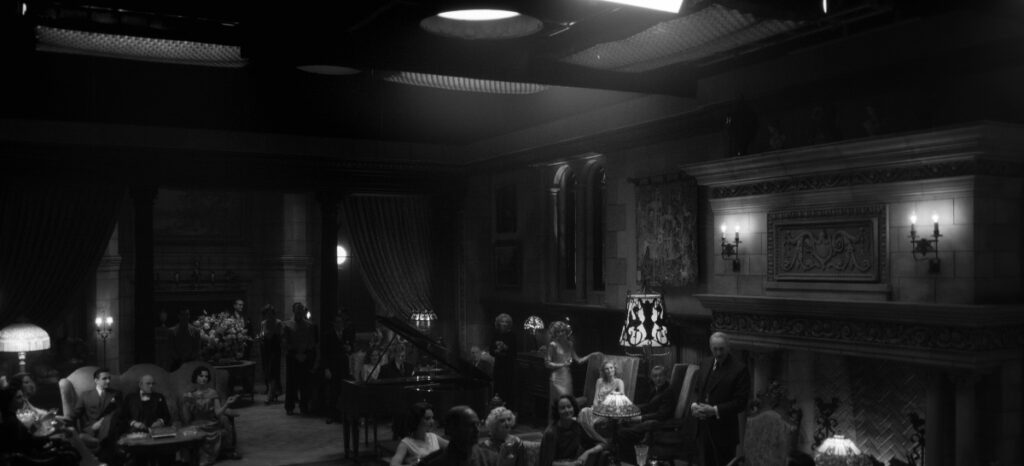
With so much intensive post work necessary for Mank, getting the film done in just seven months after filming wrapped, and during a pandemic, might seem impossible, or at least incredibly fast. “It’s not fast for a small movie– it is fast for us– ours tends to be a little bit longer,” Mavromates confirmed. “We also wanted to hit a deadline. We’re pretty proactive about putting stuff for visual effects in the pipeline, even while we’re still editing, like there’s a scene at Louis B. Mayer’s birthday party. There’s 65 fireplace shots in that, and we added the fire on every one of them. That’s not something you can leave to the last minute, just because of the sheer quantity of it.”
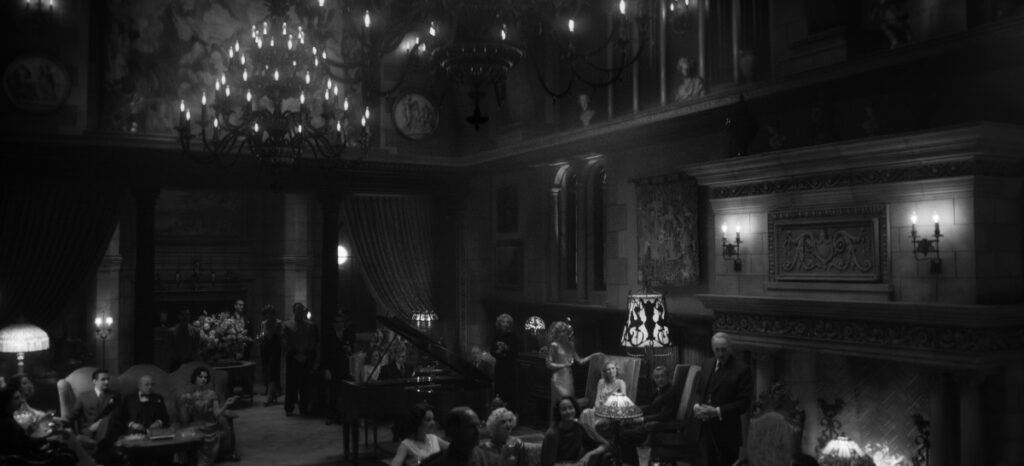
Considering Mavromates’ long-time work with Fincher, we had to ask how the filmmaker’s notorious meticulousness for detail that might include dozens (reportedly hundreds!) of takes and camera coverage culminates when it comes to post. “The editor’s on from Day One, and he’s getting a minimum of probably five pages of notes every day starting Day 2. David writes, actually encyclopedia sets of notes, and it’s constant,” the co-producer explains. “[Fincher] watches it basically every night. Things are posted to him every day, while he’s on location. He goes home and logs on and watches all the scenes and then marks them up and gives Kirk Baxter, our editor, just reams of notes, and it’s unrelenting until we’re done.”
“We went remote very quickly,” the producer explains about the film’s pandemic. “The W.H.O. [World Health Organization] called a pandemic on March 11, and by the following Tuesday, we had everybody on remote.” Neither Mavromates nor his team have gone back to the office en masse, although Mank’s DI Colorist Eric Weidt still went in on his own to the DI suite since moving it “was a big deal.”
You can see all the amazing work done by Mavromates, his crew and the respective VFX teams in Mank, which is streaming on Netflix.
*Note: We’ll have more with Mr. Mavromates in a piece we’re putting together with a few other VFX artists and a production designer talking about the advent of virtual production.
All pictures courtesy Netflix and Artemple, except where noted. All pictures can be enlarged by clicking on them.
(Thanks to Netflix’s Julie Miller for her invaluable help in putting this piece together.)





